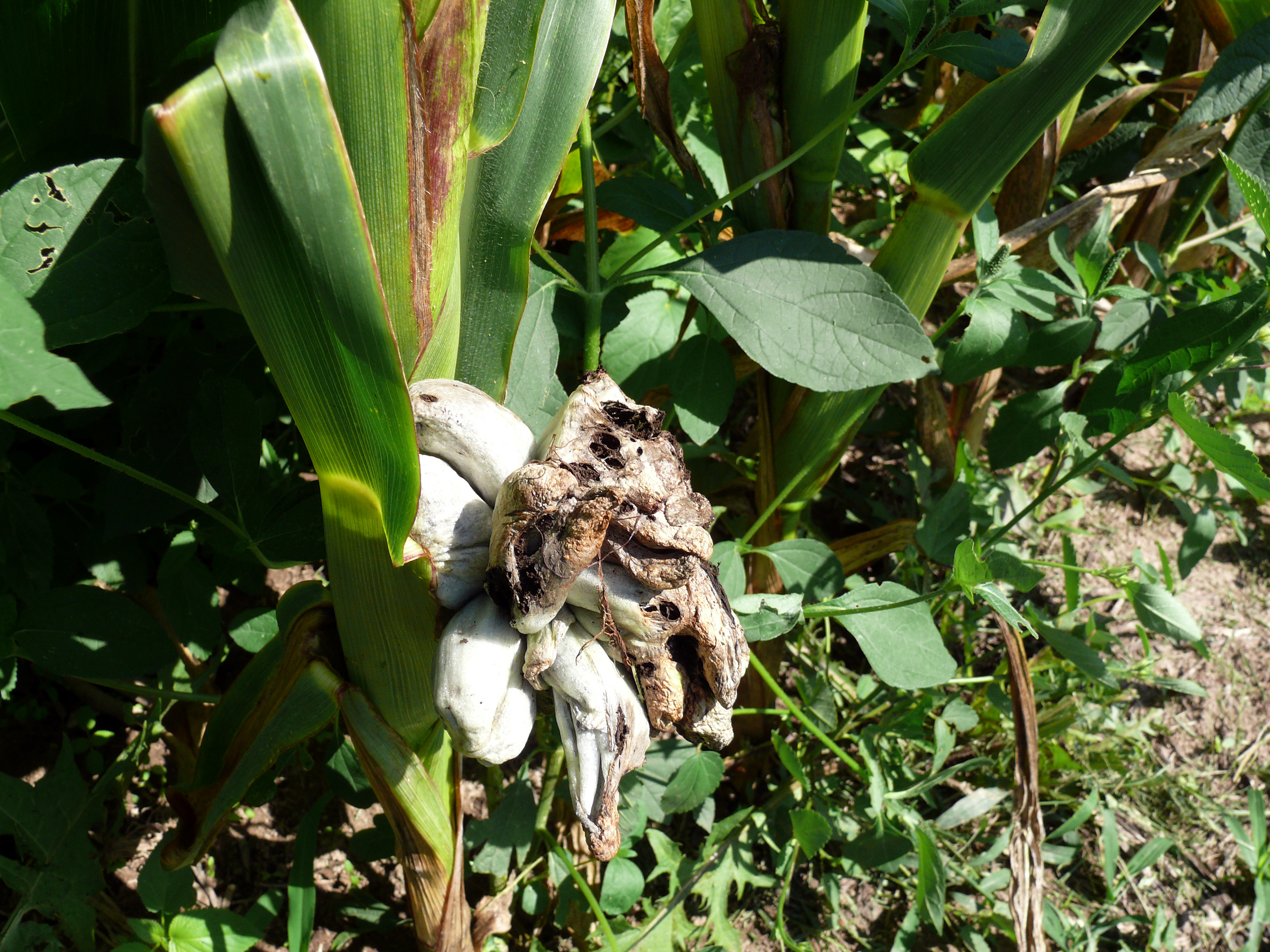Poor pollination leads to moldy growth in corn
September 6, 2012
 |
|
Smut, a fungal disease in corn, grows on an ear where corn
kernels typically would be found. Drought, heat and poor corn pollination have
lead to higher-than-normal incidences of the disease in Indiana fields this
summer. (Purdue Agricultural Communication photo/Jennifer Stewart) |
WEST LAFAYETTE, Ind. – Indiana corn farmers are seeing high incidences of a specific mold in their fields this year after a season-long drought hindered the crop's pollination.
Smut, a gray, moldy growth on corn ears, is present in Indiana cornfields every year, but rarely at the level of 2012.
"Researchers have debated about what conditions favor smut development, but it is reported that poor pollination, dry weather and warm temperatures can increase smut development," said Kiersten Wise, Purdue Extension plant pathologist. "That certainly fits the conditions experienced during the majority of the 2012 growing season."
Smut is caused by the fungus Ustilago maydis, which overwinters in crop residue and soil for several years. It tends to infect stressed leaf tissues, typically through wounds caused by hail or insect feeding. Smut also infects ear kernels through silks. Tassels and nodes also can be infected.
"Once tissue is infected, the fungus causes plant cells to divide and expand, which results in the diagnostic white 'galls' that we see with smut," Wise said. "Mature galls are filled with dark spores that may break open and leave a powdery residue on surrounding tissue."
Even with the abnormally high incidence of smut, it doesn't affect yield. And while seed and foliar fungicides aren't effective against the disease, there are some other management options in the off-season.
"Management options include tillage and rotation to reduce the amount of debris that harbors the fungus, promoting proper corn fertilization and limiting wounding of corn by mechanical equipment," Wise said.
Smut is non-toxic and often grown to be consumed as a delicacy. However, Wise cautioned against harvesting and eating the galls from just any cornfield - especially once they start to turn black.
She also said corn growers and farm workers with lung ailments or mold allergies, and those undergoing immune-compromising medical treatments, need to be cautious during harvest, including wearing mold-rated respiration masks.
Writer: Jennifer Stewart, 765-494-6682, jsstewar@purdue.edu
Source: Kiersten Wise, 765-496-2170, kawise@purdue.edu
Ag Communications: (765) 494-2722;
Keith Robinson, robins89@purdue.edu
Agriculture News Page

